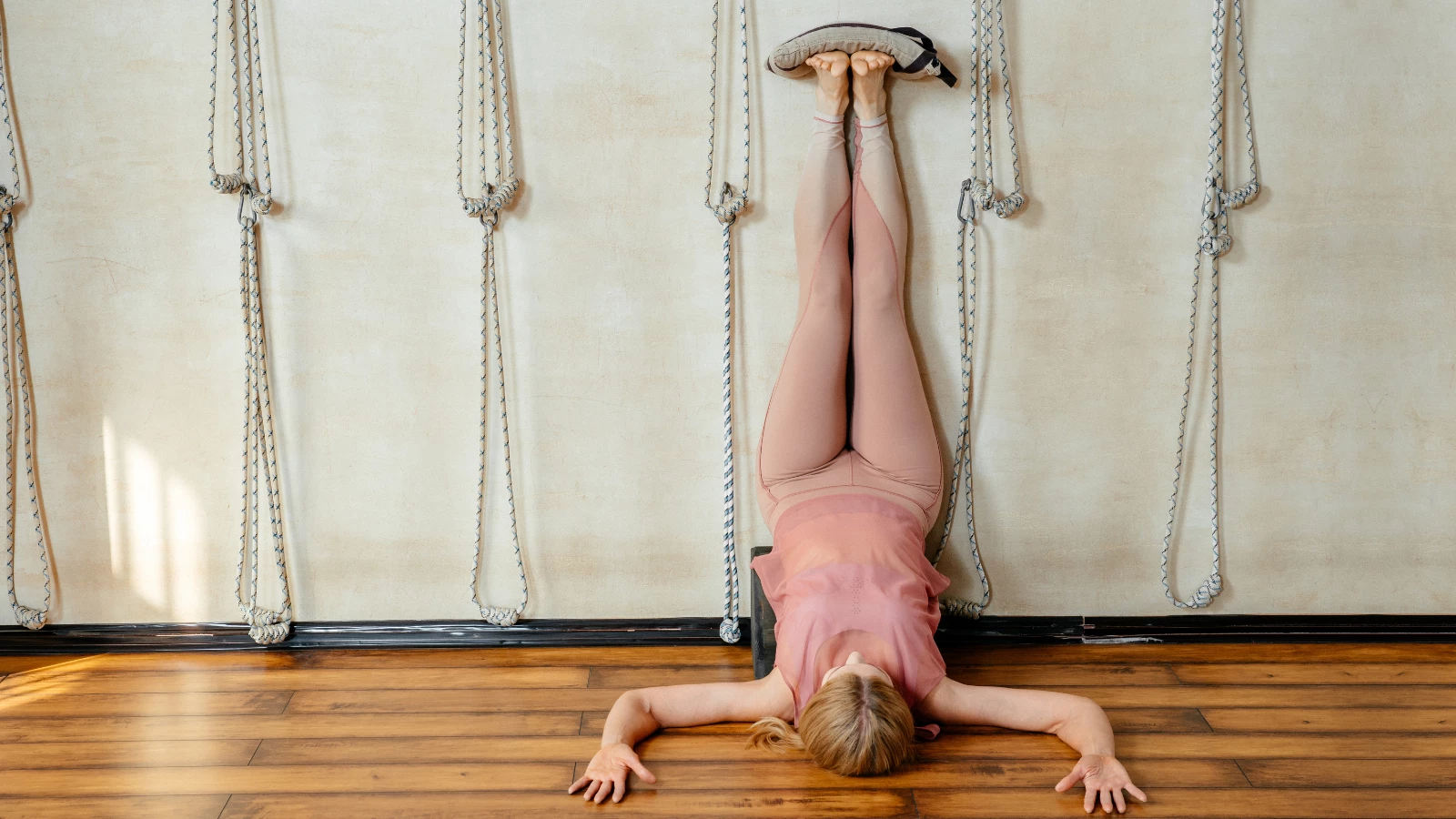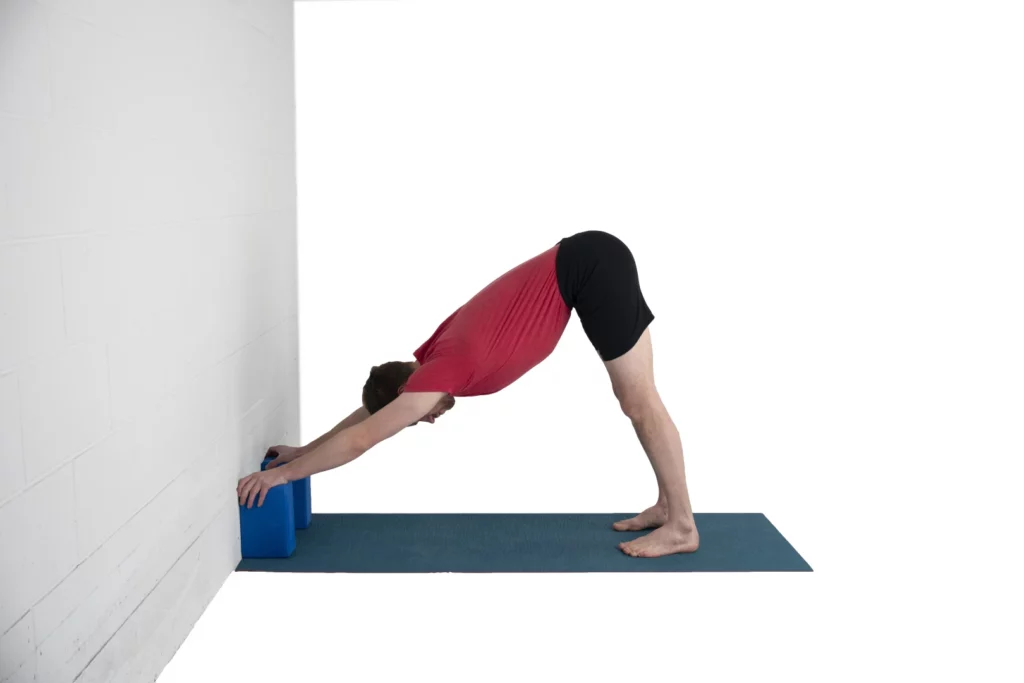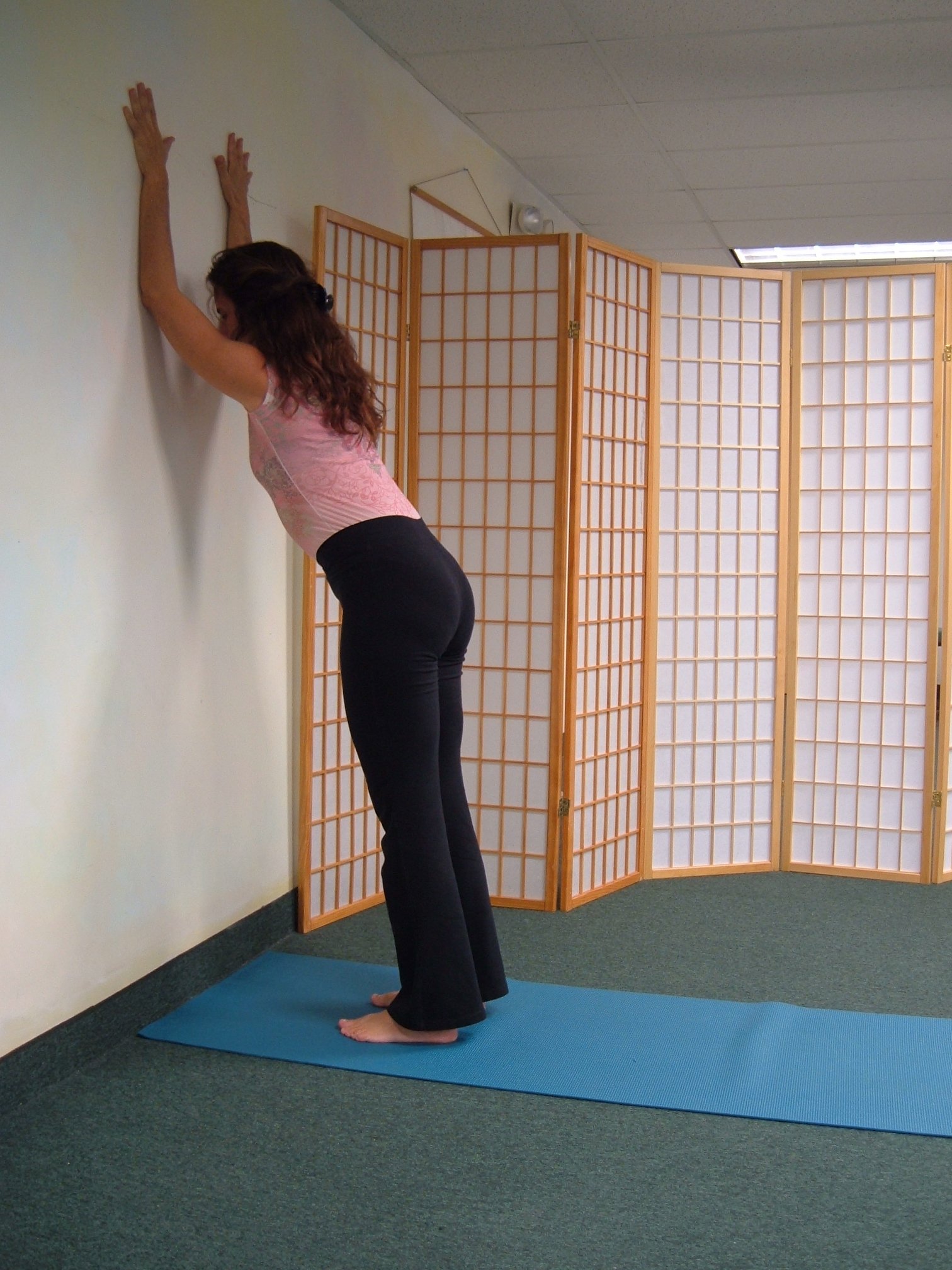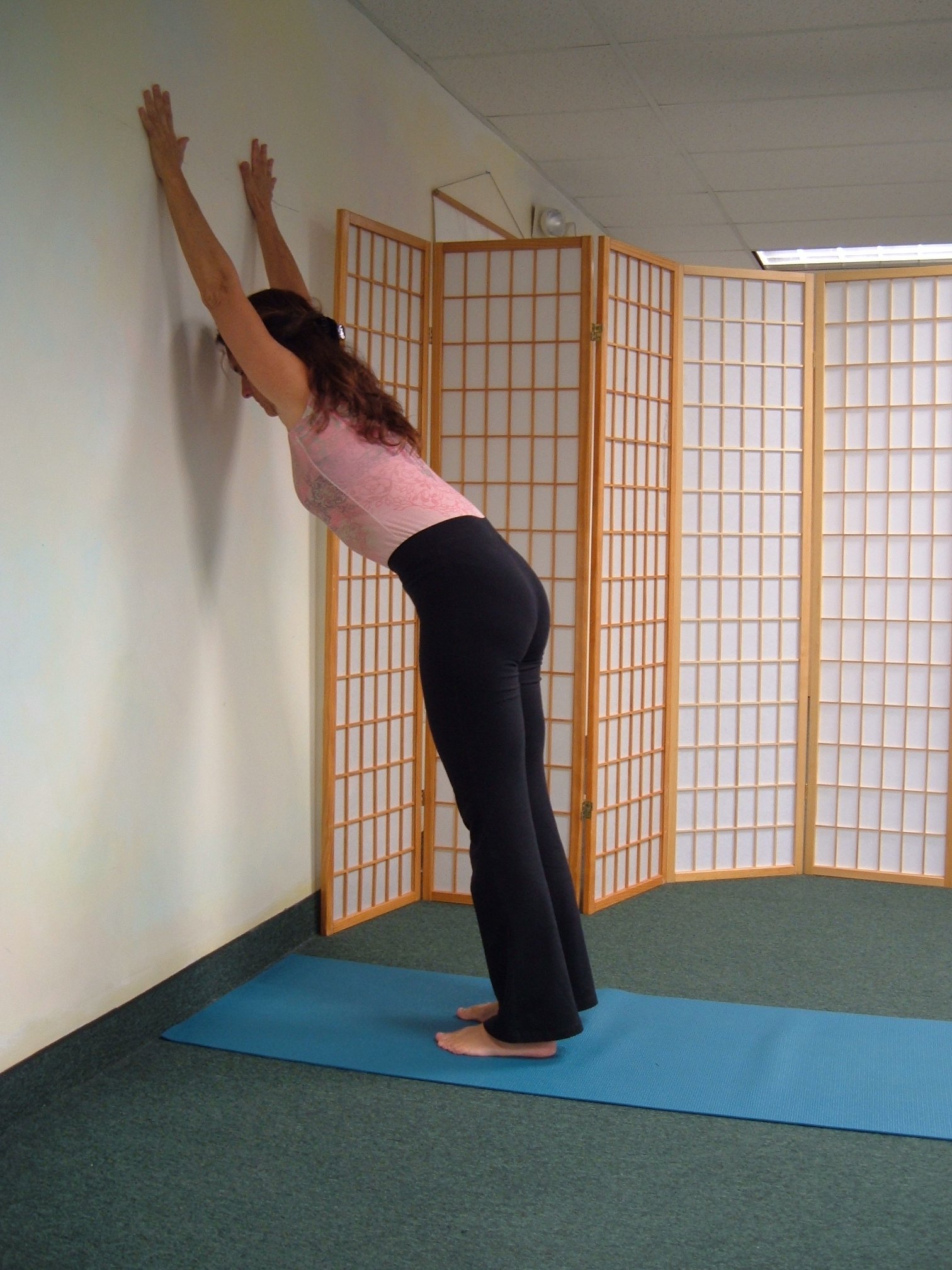Wall Yoga Exercises: Why Practice Yoga at the Wall?

Article At A Glance
Some accuse the wall of being a crutch. But how unfair to both you and the wall! This article focuses on the many benefits of practicing wall yoga exercises, including greater stability, balance, and relaxation in yoga. Read on to learn the secrets to practicing yoga at the wall.
“I thought yoga at the wall would be wimpy, but it was really challenging!” said Eadaoin, one of my advanced yoga teacher trainees, after taking one of my yoga wall classes. Her comment ignited my enthusiasm to write this book.
And after experiencing the Legs-Up-the-Wall (Viparita Karani) Restorative Pose, Charlotte said, “I have never felt so relaxed in my whole life!”
What walls do for us: they provide structure, containment, safety, shelter, limitations, support, and definition. As an aid in your yoga practice, a wall helps you articulate precise alignment and form in each pose, supports you when you want to relax, assists you when you want to try a new posture, and motivates you to energize your body more fully.
Another good reason to learn wall yoga exercises is that you don’t have to lie on the floor to do it. It’s portable and practical, and any clean wall will do. Have you ever wanted to lie on the floor and stretch in your hotel room while you were on a trip, but the floor just didn’t look all that clean or appealing? That is a perfect time to practice your wall yoga exercises.
A wall is your perfect teacher when no human teacher is around to guide you and adjust you in a yoga posture. Or maybe you’re dressed in a suit or a dress, ready for a meeting or to give a presentation, and feeling a little stressed. You want to do some yoga but know you will wrinkle your clothes if you get on the floor. You have found another perfect opportunity to find your nearest yoga wall.
When you get the chance, visit my website and download my free MP3 files of yoga wall classes that you can put on your computer or iPod, and practice wall yoga exercises wherever you go.
Practicing at a Wall Adds Dimension to Your Yoga Practice
Some accuse the wall of being a crutch; how unfair to both you and the wall! In my experience, the wall feels like a trusty friend who always tells me the truth, whether I want to hear it or not. Until becoming friends with your wall, when you practice yoga postures you have only the floor—a horizontal reference point—to know where your body is in space.
When practicing wall yoga exercises, you have a vertical reference point for your further orientation. You can lean on it, align yourself with it, push off it, or press into it. The wall not only assists you, it adds another degree of challenge to your practice.

When you leave the wall and go back to practicing on the floor, you have a whole new level of awareness of your alignment and a different experience of your body. You may visit the wall more often than you can imagine before you learn the following poses and postures.
Through this practice, I became “one with my wall.” The benefits of a vertical practice serve you well at home, at your office, and everywhere there is a wall to befriend.
Join me in our journey to expand the possibilities of your yoga practice with yoga at the wall.
Wall Yoga Exercise #1: Forearm Press at the Wall

Possible Benefits of Forearm Press at the Wall
- Promotes openness and expansion in the chest and shoulders.
- Pressing into the wall cultivates strength in the muscles of the arms, upper back, and shoulder area.
- Expands the breath into the back ribs and lungs.
How to Practice Forearm Press Yoga at the Wall
- Press the palm sides of your forearms against the wall, slightly higher than your shoulders (photo on left). Set your feet about hip-width apart.
- Walk backward, away from the wall, about 2 feet without arching your back. Sense into the correct distance from the wall for your unique body proportions and range of motion.
- Spread your fingers apart as much as possible with your index fingers pointing upward, or a little bit away from each other (which encourages lateral rotation of the shoulder).
- Focus your gaze on a point on the wall, or close your eyes. As you go deeper into the pose, you can experiment with gazing toward the floor beneath you.
- Keep your arms parallel to each other as much as possible while also honoring your range of motion. Your elbows might slide out a bit, but avoid collapsing your chest to the wall.
- Let your chest and torso relax toward the floor. Let your heart melt toward the Earth.
- Align your head and neck with your spine, or drop your head slightly toward the wall. Feel which is most comfortable for you.
- Invite your shoulders to drop down and away from your ears. Encourage your shoulder blades to connect with your back ribs.
- Imagine your armpits are yawning toward the wall.
- Keep your spine long, your pelvis neutral, and your abdominal muscles engaged to avoid the tendency of overarching the lower back.
- Keep your knees slightly bent for comfort and safety in your knees and lower back, especially if you tend to hyperextend your knees.
- Breathe deeply into the upper and back lungs, and lengthen your exhalation.
- Allow your chest and shoulders to soften more with each exhalation, yet without losing your alignment and form.
- To release the pose, walk toward the wall and let your arms slowly return to your sides.
- Pause and feel. Notice the sensations and flow of energy.
How to Use Yoga Props in FOrearm Press at the Wall
Place a yoga block, in its narrow dimension, between your inner knees or thighs to activate your legs and keep your legs engaged.
Wall Yoga Exercise #2: Experiment in Forearm Press at the Wall

- Raise your arms higher up or lower down on the wall, and notice any shifts in sensations and the experience of your body.
- Experiment with your hand and forearm placement. Bring your arms slightly closer together or farther apart. Find the position that feels just right for you at this moment—not too much, and not too little sensation. This may change with practice.
- Take your elbows off the wall and straighten your arms (photo above). Notice new sensations in your arms, shoulders, and back.
Also, read...
Yoga Practice at the Wall: 5 Poses to Soothe Your Body and Mind
3 Tips for a Stable Warrior III: Using a Wall in Your Yoga Practice
A Relaxing Yin Yoga Sequence Practiced at the Wall
Related courses
Journey to Center: A Yoga Guide to Unlock the Full Potential of Your Core
Yoga for Healthy Hips: Principles for a Safe Practice
Need an Energy Makeover? How Yoga Can Help You Boost Vitality

Stephanie Ann Pappas (aka Stefani) is a Somatic Experiencing® Practitioner (PTSD body-oriented trauma resolution), Licensed Massage Therapist in NJ and PA, and Yoga Teacher/Trainer. She currently has offices in Frenchtown, NJ, and Washington Crossing, PA, where she offers trauma-informed online sessions and classes.
Stephanie is the author of Yoga at Your Wall, a book that inspires you to do more yoga. Whether you are a beginner, intermediate, or advanced yoga student, Stephanie’s book Yoga at Your Wall offers an innovative and safe way to practice yoga.
